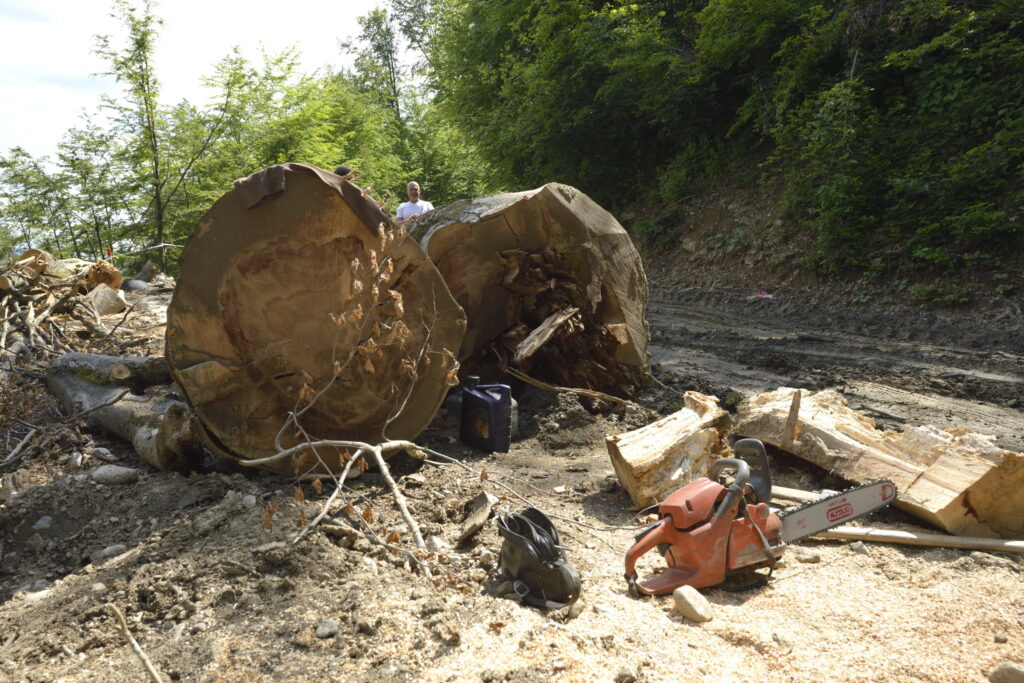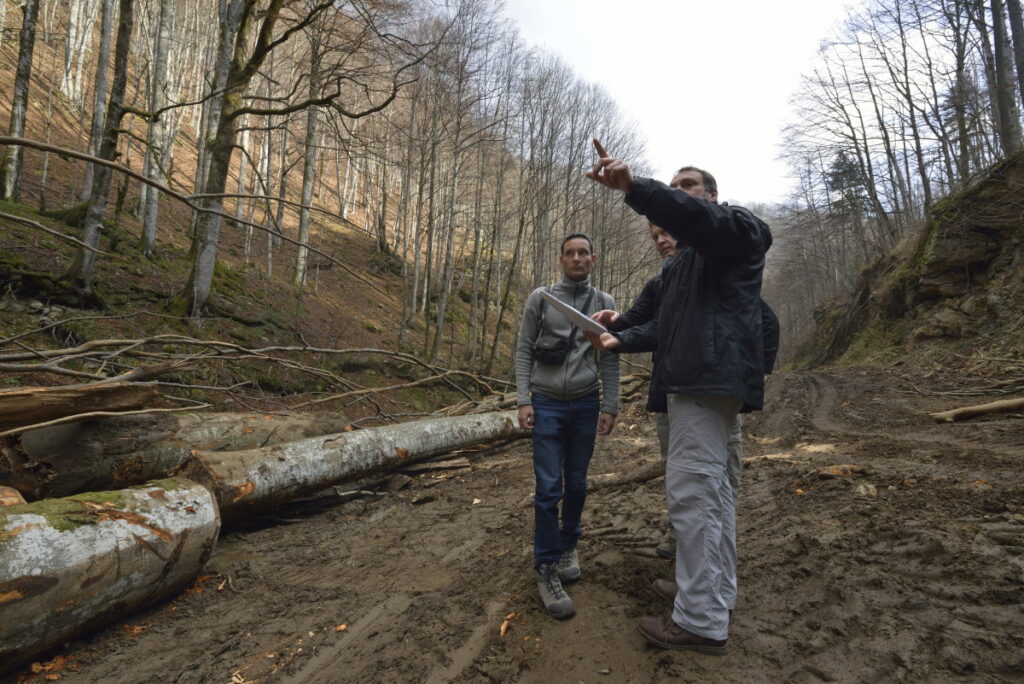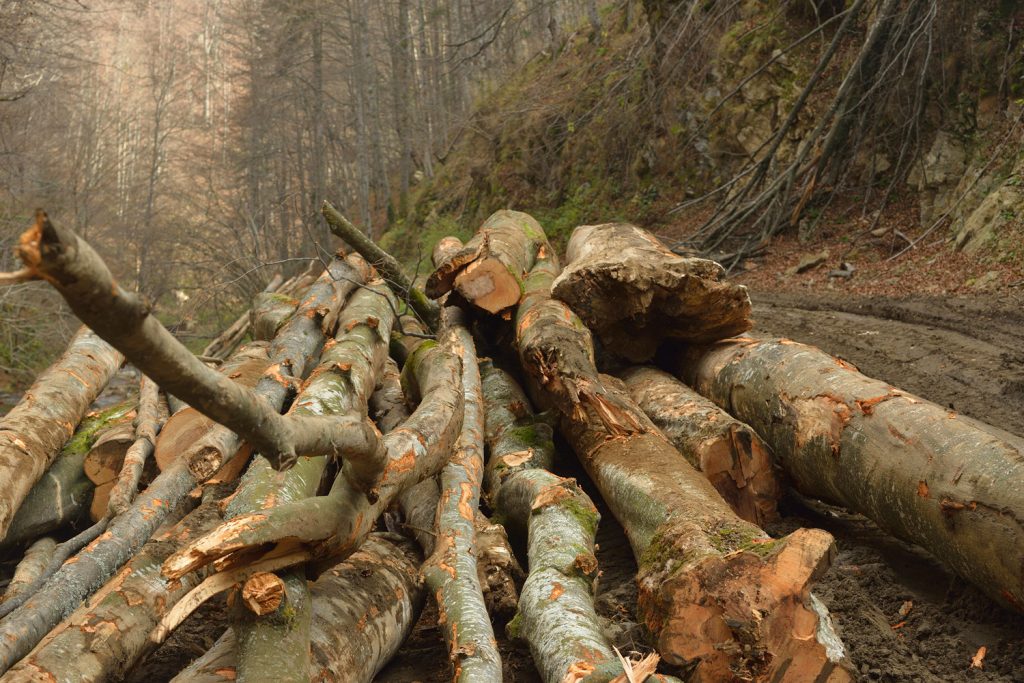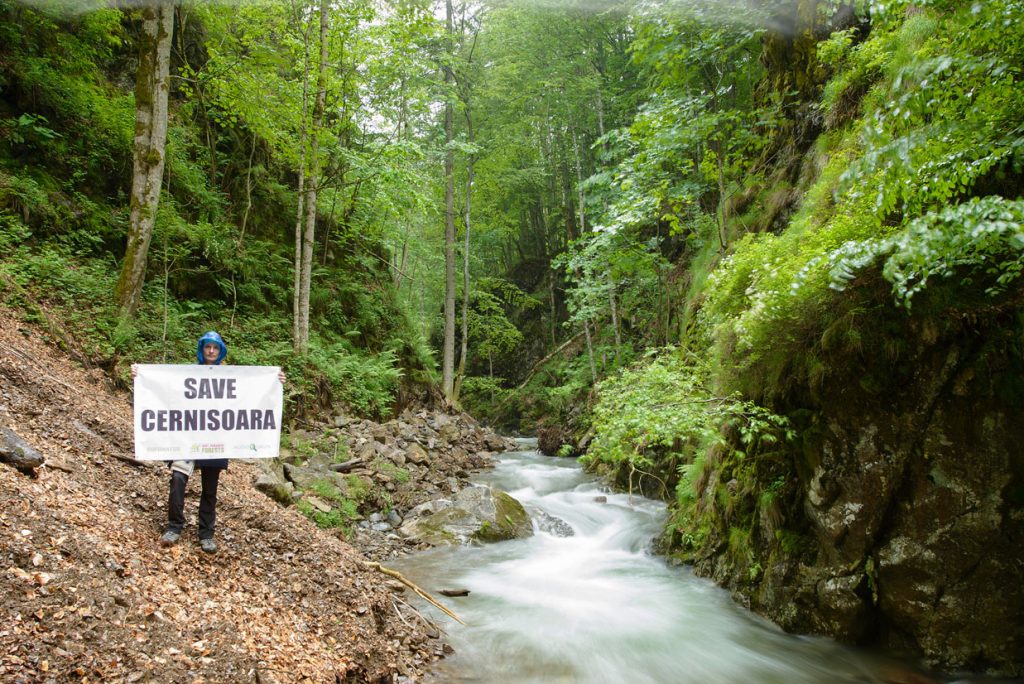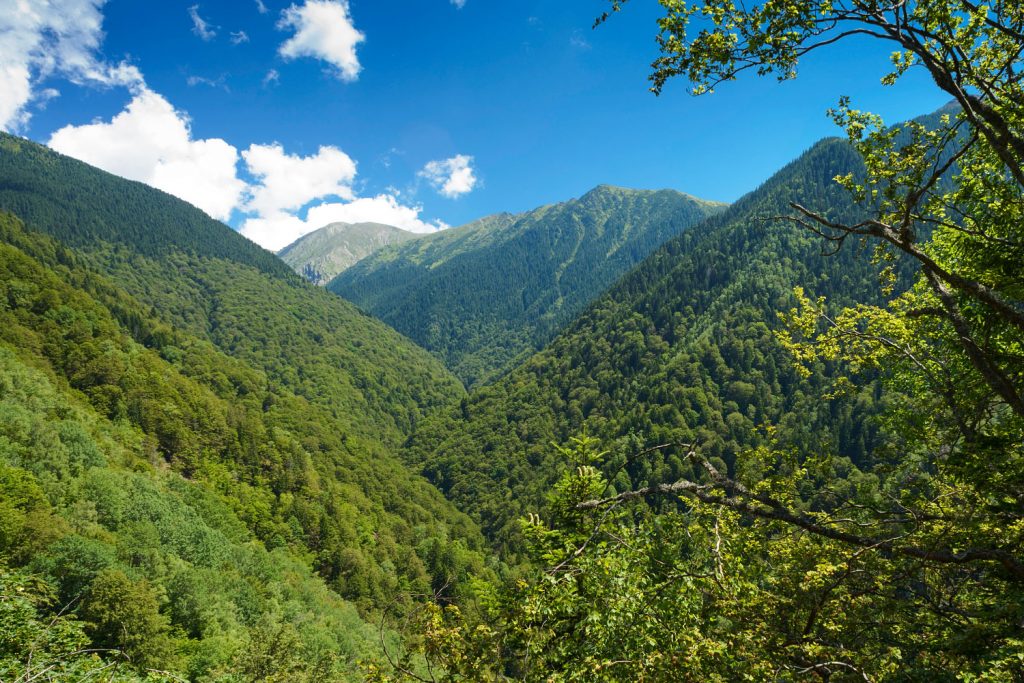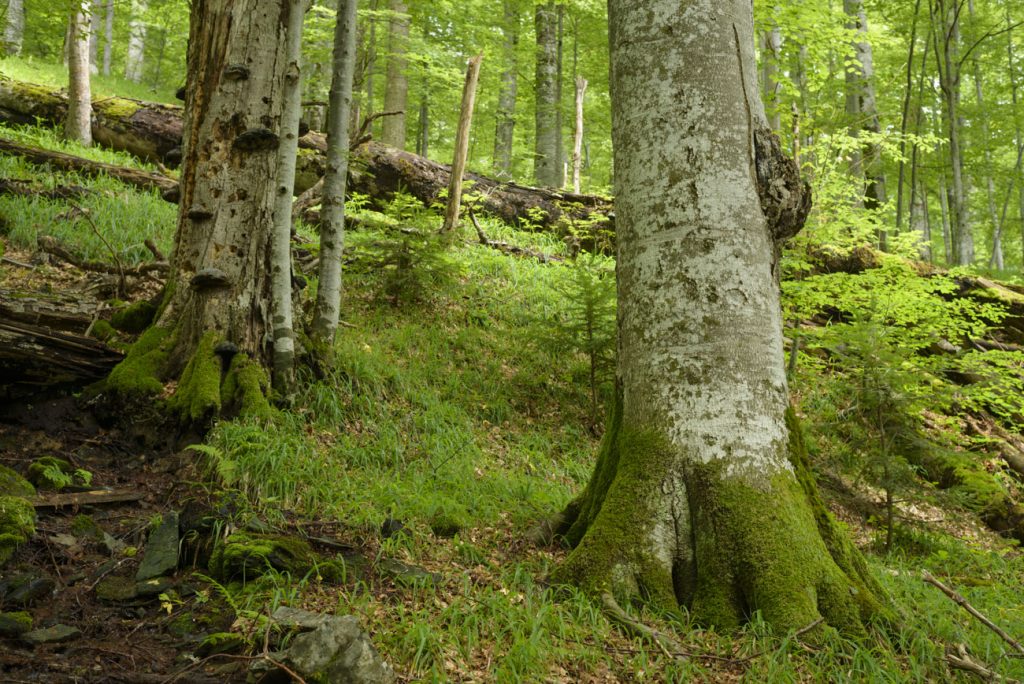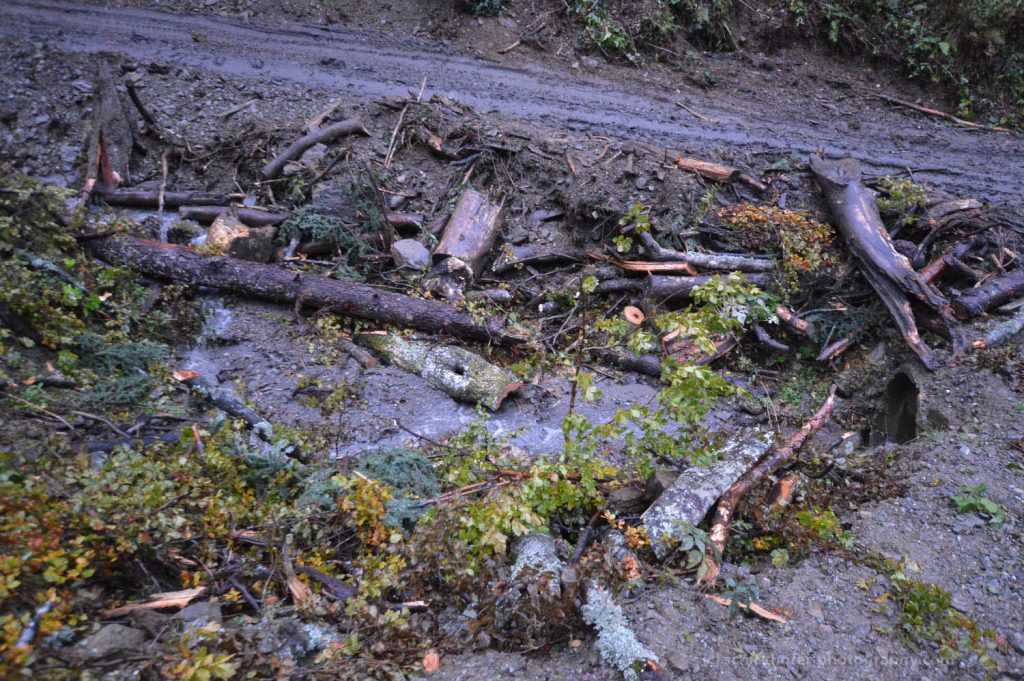Report about Reactive Monitoring Mission in 2019 published only recently: Romania does “not meet” international guidelines
EuroNatur and Agent Green call on Romania to immediately remove state forestry enterprise Romsilva from all protected area management duties and adopt site management according to international UNESCO/IUCN guidelines and EU legislation.
A few days ahead of the International Day of Forests on (March 21) a “Report on the joint World Heritage Centre / IUCN (International Union for Conservation of Nature) Reactive Monitoring Mission to Albanian and Romanian component parts of the transnational World Heritage Property ‘Ancient and Primeval Beech Forests of the Carpathians and other Regions of Europe’“ was made available to the public.
The mission, visiting Domogled-Valea Cernei and Cheile Nerei-Besnita National Parks/UNESCO properties, took place in November 2019.
However, the report was only just made publicly accessible. It is not clear what the reasons for this massive delay are. Could it be that the critical conclusions of the UNESCO/IUCN experts with regard to the intensive logging operations in the buffer zones of Romanian UNESCO component parts caused controversy?
The document states: “The mission concludes that the current management of the component parts’ buffer zones does not meet the requirements of the Operational Guidelines (OG) in a satisfactory way and may have negative effects on the integrity of the transboundary property. The current forest management should seek to better support the natural processes and be based on strengthening and expanding ancient and primeval beech forest ecosystems over time.“
UNESCO and IUCN also urge Romania to “strictly protect all ancient and primeval beech forest ecosystems that have not been included in the property, in order to foster the long-term preservation of those exceptional ecosystems; priority should be given to those located in proximity of the components visited by the mission, to enhance connectivity.“
This mission was triggered by numerous media reports and formal complaints from EuroNatur Foundation, Agent Green and many other conservationists concerning destructive logging of old growth and primary forests in UNESCO buffer zones, even in close vicinity to the UNESCO core protected areas. Commercial wood exploitation authorized by the Romanian state in the buffer areas affects biodiversity rich and mature forests with an equal “universal value” to the beech forests included in the UNESCO site (core area).
The joint UNESCO/IUCN Mission in 2019 was preceded by an informal IUCN Europe field visit in November 2018, where intensive logging operations in highly valuable old growth beech forests in Domogled-Valea Cernei and Semenic National Parks/UNESCO site component parts, including in buffer zones, were confirmed.
On top of the EU infringement proceedings against the Romanian state (launched by the European Commission in February 2020 due to deterioration of EU protected areas by logging), the clear findings of UNESCO and the IUCN are just another indicator that protection of high biodiversity value forests in Romania is in a catastrophically bad state.
The intensive logging operations in the Romanian World Heritage buffer areas ultimately endanger the existence of the entire transnational World Heritage site for the protection of the European primeval and ancient beech forests, which consists of 67 component parts in 12 countries …
EuroNatur Foundation and environmental organisation Agent Green interpret the findings of the report as “crystal clear evidence” that Romanian state forestry enterprise, Romsilva – the agency in charge of both logging in Romania and management of almost all Romanian national and nature parks – is “not capable” of managing protected areas for conservation of highly valuable ecosystems appropriately. The long record of controversies and the poor state of many protected areas under custody of Romsilva shows that the company is “obviously driven by commercial interests and fundamentally lacks ambition and expertise regarding nature conservation”.
Therefore, Romsilva needs to be immediately removed from all duties for protected area management. Management of Romania’s protected areas should be taken over by official national bodies (such as National Agency for Protected Areas) and equipped with adequate funding to ensure conservation objectives are met. Logging in buffer zones on state property needs to be halted until new management plans in line with UNESCO/IUCN guidelines are developed. Management plans of all UNESCO World Natural Heritage properties, as well as national parks need to be revised following the recommendations by the UNESCO/IUCN report.
“The World is celebrating the International Day of the Forests on March 21. Romania’s outstanding natural forest heritage is one of the most valuable ecological treasures of Europe. Romania must act accordingly and stop logging primary and old growth forests. And the EU needs support Romania with adequate means for compensation of private land owners,” EuroNatur and Agent Green conclude.
In detail, the final report by World Heritage Centre and IUCN concludes with the following recommendations:
-
- Define a forest management regime specific to the buffer zones that would be in keeping with the aim to ensure consistency and coordination across all buffer zones within the property, and that would promote the natural and unimpeded, progressive aging of the beech forest ecosystems present in the buffer zones. This regime should ensure an ecological transition between the component parts and the surrounding forest ecosystems of high ecological value, including those located in the buffer zones and, in case of Romania, the virgin and quasi-virgin forests listed in the ‘National Catalogue of Virgin Forests’.
- This regime should prioritize natural processes and be based on ‘pro-forestation’ efforts and clear guidelines on appropriate intervention activities and limits, in the sense of Decision 43 COM 7B.13 of the World Heritage Committee (remark: “ensure appropriate buffer zone management in order to support undisturbed natural processes”)
- It could include the establishment of a functional network of ‘aging’ and ‘senescence’ patches of forest, in the buffer zones, aiming to contribute to strengthening and extending the ancient and primeval beech forest ecosystems, and supporting the natural processes leading to their conservation and naturalness over time:
- “pro-forestation” efforts should be interpreted as all forest management activities seeking to promote natural tree reproduction and development;
- “aging patches”should be interpreted as forest areas managed in such a way as leaving the trees growing beyond their usual rotation age, up to twice this duration (200-240 years in case of Romania);
- “senescence patches” should be interpreted as forest areas deliberately abandoned to a spontaneous evolution of natural processes, until the complete collapse of the trees and resumption of the silvigenetic cycle (forest cycle);
UNESCO/IUCN also call on the Romanian State Party, to “combat and prosecute any illegal logging activities in the two national parks“, “abandon plans to upgrade the national road 66A, due to the potential impact of this project on the property’s integrity” and “inform the World heritage Centre of any proposal to extend or upgrade hydropower facilities within the property’s components and their buffer zones, before any decision is taken“.
